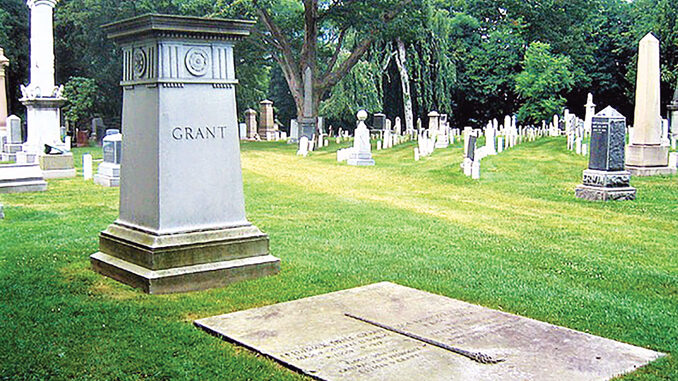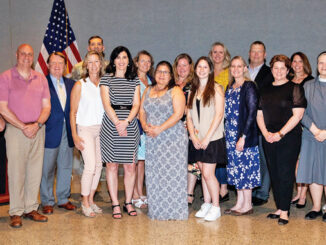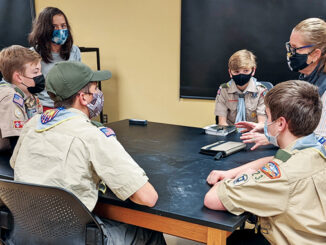
By JoAnne Castagna, Ed.D.
West Point Cemetery, located on the grounds of the United States Military Academy at West Point, New York is America’s oldest military post cemetery and a national historic landmark.
“Historic, park-like, cemeteries like this, were never intended just to be resting places for the dead,” said Ulysses Grant Dietz, Historian. “They were always envisioned as places of interaction and memory for the living.”
Dietz is the great great grandson of Army General Ulysses S. Grant who was the nation’s 18th president and commander in chief and the great-grandson of Major General, Frederick Dent Grant, who has a grave in the West Point Cemetery.
To ensure this cemetery continues to serve this purpose, the U.S. Army Corps of Engineers, New York District is expanding and improving the serene grounds for the thousands of visitors who come to the cemetery each year.
Raymond Pifer, project manager, New York District, U.S. Army Corps of Engineers said, “This project supports the Army’s commitment to provide in-ground burial to authorized service members and their families who have dedicated their lives in the service of this nation.”
The cemetery’s sprawling 11-acre grounds is home to 9000 graves and several monuments, including the distinguished Old Cadet Chapel that greets visitors at the entrance.
The cemetery was created in 1817, but before this the grounds were used by residents for burials, including the graves of Soldiers from as far back as the Revolutionary War.
The cemetery holds some of America’s most storied military leaders and historic figures that includes distinguished Soldiers, Medal of Honor Recipients, astronauts, athletes, and family members.
These include individuals like Gen. Norman Schwarzkopf, Jr., commander of coalition forces in the Gulf War; Lt. Col. Edward White II, the first American to walk in space; and Major Gen. Frederick Dent Grant, son of President Ulysses S. Grant, who was a soldier and U.S. Minister to Austria-Hungary.
Dietz, who is on the board of the Ulysses S. Grant Association and speaks annually at “Grant’s Tomb” in New York City said, “Each gravesite associated with President Grant or with his wife Julia is important to the Association. General Grant was the first of three career generals named Grant to be launched by the Academy; the fact that his eldest son Fred lies here with his wife, Ida, makes it an especially important historical spot for the Association.”
The Army Corps has constructed many structures on the campus over the decades and now it is expanding and enhancing its cemetery.
The work is being accomplished by Army Corps contractor Intercontinental Con-struction Contracting Inc. of Passaic, New Jersey. The grounds will be expanded to make space for an additional 3,492 graves that will include in-ground burial sites and internments for cremated remains.
To make room for the new grave sites, an old PX gas station site was demolished and contaminated soil on the site was excavated and removed.
After this, retaining walls were constructed along the sloped area along the river, to provide land stability.
To add additional stability, special foundations will be placed throughout the grounds to address the varying soil conditions on the site.
When space is made, grave sites will be installed. This will include 836, 3×8 crypts; 32, 4×8 crypts; 2,156, 3×4 internments for cremated remains; and 468 internments for cremated remains that will be placed in a niche wall or columbarium, this is like a mausoleum that is designed for the interment of cremated remains.
To ensure the cemetery can run efficiently, additional structures will be constructed including waterlines, sanitary sewer, storm drainage, telecommunications, electrical power distribution, security systems, and heated and air-conditioned storage and maintenance facilities for cemetery staff.
“Historic, park-like, cemeteries like this, were never intended just to be resting places for the dead. They were always envisioned as places of interaction and memory for the living.”
Ulysses Grant Dietz, Historian
Visitors to the cemetery will not only have more spacious grounds to walk, but also new entrance gates, vehicle and pedestrian access roads and walks, exterior lighting, curbs and gutters, access for individuals with disabilities, perimeter fencing, restrooms, and signage to help them find loved ones.
Even though construction is in the works, visitors are still coming to the cemetery. John Butler, project engineer, New York District, U.S. Army Corps of Engineers, said, “As I watch people walk through the cemetery, I realize that they are likely not visiting family, but rather individuals that made an impact on the many generations that have followed them.
It is a gentle reminder that this cemetery contains not only individuals that are mourned by their family but individuals that we are indebted to for their past actions regardless of whether their names are known today or a simply a part of history.”
This is not the only thing Butler realized. He said, “Originally when I found out that I would be working on a cemetery I cannot deny that there was a bit of apprehension, as I like most individuals, do not tend to venture into a cemetery to either dig or be there after dark.
After getting past this initial reaction, I find myself truly honored and privileged to be working on a project that will provide the final resting place for many of the leaders that this academy has and continues to create during the 20th and 21st centuries. It will allow them to take their place in history alongside those that have chosen the academy as their final resting place.”
The work on the West Point Cemetery is expected to be completed in the spring of 2022.
Dietz, whose famous ancestors touch every aspect of the campus including Grant Barracks, the General Ulysses S. Grant Monument, and the cemetery, said, “The West Point Cemetery is a remarkable historic graveyard, which makes it both a historic green space and a touchstone to a great deal of American history. As such, it deserves the same sort of care and attention that a historic building would get. I’m really delighted that the Army Corps has turned its attention to it.”
Butler added, “It’s an honor to be able to work on a project that is creating a tranquil place for families to grieve, remember, and reminisce about their loved ones and to provide a final resting place for so many leaders that have served our great nation through some of its best and some of its worst times.”
(Editor’s Note: Dr. JoAnne Castagna is a Public Affairs Specialist and Writer for the U.S. Army Corps of Engineers, New York District. She can be reached at joanne.castagna@usace.army.mil.)



